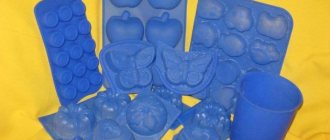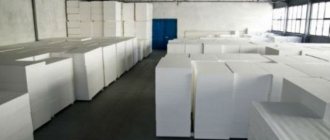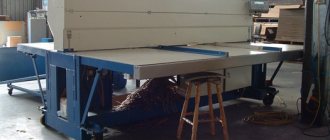How to make condensed milk at home
A wide range of condensed milk is available on store shelves. The tasty delicacy in a tin was produced in different parts of the world. The modern economy has relaxed the requirements for the quality of the condensed product produced. The industrial dessert is prepared with palm oil and dairy products, and not at all from tasty and healthy cow's milk. To avoid heterogeneous crystallization of sugars and achieve a stable structure, lactose microcrystals are added to the product.
Housewives are looking for recipes for home cooking without harmful additives. The production technology in an ordinary kitchen is not complicated; you can prepare a delicious treat without much hassle. The preparation procedure and recipe change only slightly. The dairy product is boiled with granulated sugar over low heat to the desired consistency. There are several secrets for preparing the perfect condensed product:
- Use only milk with a high fat content of at least 3% (with the exception of low-calorie condensed milk).
- If the freshness of the raw materials is in doubt, add a little soda. This component will prevent the milk from curdling.
- The dessert will not burn if you use a thick-bottomed pan to prepare the condensed milk. You need to stir the mixture constantly so that the milk does not run away or burn.
- The delicacy thickens after it cools, so do not overcook it. Hot condensed milk will be semi-liquid.
What does condensed milk mean according to GOST
The high requirements for condensed milk back in 1952 are not met today. This product contained only carefully purified and tested whole milk and sugar. As a result of boiling, condensed milk with a fat content of 8.5% was obtained. A special production technology made it possible to preserve the maximum amount of useful substances in the final product even during prolonged heat treatment.
Features of the technological process
The main secret of the technological process is long-term pasteurization at a temperature of 60 to 65 degrees. This heat treatment does not destroy valuable macro- and microelements, vitamins, proteins, and milk fats contained in the whole milk product. Thanks to modern kitchen appliances (multi-cookers, pressure cookers), you can follow this technology at home. Even in the absence of special devices, there are methods that will prevent milk from leaking onto the stove, but the temperature will have to be adjusted manually.
Condensed milk production technology
To begin with, the condensed milk production plant receives fresh cow's milk from suppliers. When it is delivered, no more than 1 hour should pass; if the raw materials are delayed, they will lose their taste and beneficial properties and the finished product will be spoiled.
Production line
The production of condensed milk occurs in several stages. After receiving the raw materials, they are checked for compliance with quality standards in a special laboratory. If the product passes the control, it is cooled and fed into a special filter, where the filtering process takes place.
Milk normalizer
Next, normalization begins; if there is not enough fat content, then the condensed milk production technology allows for the addition of milk fat or cream; if the percentage of fat content is too high, then skim milk is added.
The next stage of condensed milk production is milk pasteurization, i.e. heat treatment, this ensures long-term storage of the product without the appearance of harmful bacteria. It takes place at temperatures from +90 to +95 degrees Celsius. After which it cools to 70 degrees.
Then, during production, the raw materials are condensed or evaporated. To do this, a vacuum evaporation unit is needed on the condensed milk production line, where the liquid boils intensely with continuous stirring, so excess moisture evaporates faster.
Adding syrup
At the same time, sugar syrup is produced. To do this, the water is preheated to 60 degrees and sifted granulated sugar is added, where it is completely dissolved. After this, the liquid is heated to 90 degrees and a brown syrup is obtained, then it is filtered. The final sugar content must be at least 70%. In this case, after finishing making the syrup and adding it to the milk, no more than 20 minutes should pass. While the milk is evaporating, add the resulting syrup and continue to thicken until smooth.
The next stage in the production of condensed milk is cooling. The finished product is cooled to a temperature of +20 degrees with constant stirring for 20 minutes. This provides an additional guarantee that there will be no grains or lumps in the end.
Then lactose is added to the condensed milk to prevent the formation of large lactose crystals that appear naturally during cooling.
Next, the resulting product undergoes control: density, mass fraction of dry matter and other quality indicators. The final stage on the condensed milk production line is packaging of the finished product.
At the moment there are several types of packaging:
- Can;
- Plastic bottle;
- Doy Pack – vacuum plastic packaging with a lid.
On the condensed milk production line, it is prohibited to break the tightness of the product, otherwise harmful bacteria will enter the product and spoil the quality.
Video of how condensed milk is made
Technology for preparing boiled condensed milk
The equipment required for its preparation is the same as for regular condensed milk. The difference lies in the cooking time. Milk and sugar syrup are boiled for 2.5 hours at a temperature of 105 degrees with constant stirring.
Condensed milk recipe
Among homemade recipes, there are many ways to prepare condensed milk. Modern recipes are prepared not only from the whole product, but also from powdered milk or using infant formula as a basis. Natural additives include coffee or cocoa, which give the dessert a special taste. You can prepare a healthy treat without harmful ingredients. Follow the instructions, keep the proportions so that the treat turns out perfect. Do not increase the cooking time. In a digested dish, within a few days the process of crystallization of sugars will begin.
Classic condensed milk according to GOST
- Time: 3 hours.
- Number of servings: 5-6 persons.
- Calorie content of the dish: 164 kcal/100 g.
- Purpose: dessert.
- Cuisine: international.
- Difficulty: easy.
The recipe for condensed milk without foreign additives according to GOST is suitable for true connoisseurs of the taste and quality of this sweet delicacy. Granulated sugar plays the role of a preservative in the recipe. Even an opened jar can be stored in the refrigerator for 30 days. The cooking process is long, but you can prepare the product for future use. Condensed milk is prepared faster at home from a high-fat product. If you want a thick product, replace regular sugar with cane sugar. It is characterized by strong crystallization and will make the consistency denser.
Ingredients:
- sugar – 250 g;
- milk – 0.5 l;
- water – 50 ml;
Cooking method:
- Boil sugar syrup using a heavy bottom pan.
- Gradually add milk to the sugar mixture.
- Cook for 2-3 hours until desired consistency over very low heat.
- You can make preparations with classic condensed milk if you pour it into sterile jars and roll it up.
Production of condensed milk
It would be smarter to produce high-quality products, so you can quickly gain the trust of consumers. Based on this, you need to make a choice whether powdered or whole milk will be used. The installation for producing condensed milk from fresh raw materials is simpler, but a lot of other problems arise.
This is the search for large manufacturers, transportation and storage of perishable products. In winter, raw materials may become scarce or their prices may rise sharply. Therefore, it is much easier to buy powdered milk, which is always available and at a stable price.
Homemade condensed milk powder
- Time: 1 hour.
- Number of servings: 3-4 persons.
- Calorie content of the dish: 312 kcal/100 g.
- Purpose: dessert.
- Cuisine: international.
- Difficulty: easy.
To express the milky taste, sometimes condensed milk is prepared at home with the addition of dry concentrate. Do not use water to dissolve - only whole milk. When purchasing a concentrate, pay attention to its composition. Avoid low-quality products with vegetable oils and preservatives. To ensure that the dry powder dissolves well, set the liquid at the correct temperature - about 60 degrees. In cold or too hot milk, the powder will not disperse and lumps may form.
Ingredients:
- powdered and whole milk – 300 g each;
- sugar – 300 g.
Cooking method:
- Place the pan with milk in a water bath.
- When the temperature approaches 60 degrees, begin to gradually add the concentrate. Stir during cooking to prevent lumps from forming.
- Cook the mixture for about an hour, stirring occasionally with a whisk.
How to organize the supply of raw materials for the production of condensed milk
The main raw materials for the production of condensed milk are raw milk and sugar. Before starting a business, it is necessary to take into account a number of difficulties that arise with whole milk:
- the need for regular suppliers who offer high-quality raw materials at an attractive price;
- ensuring the delivery of raw materials and their transportation;
- in winter and autumn, milk becomes more expensive;
- storage of raw materials.
You can enter into an agreement for the supply of whole raw materials with various farms. The more raw materials purchased in bulk, the greater the discounts will be.
From the cream
- Time: 1-1.5 hours.
- Number of servings: 7-8 persons.
- Calorie content of the dish: 387 kcal/100 g.
- Purpose: dessert.
- Cuisine: international.
- Difficulty: easy.
Condensed milk is a universal product that you can take with you on a trip, serve with tea, pancakes, and use for making various creams. Those who are on a diet are not recommended to consume even proper condensed milk. The product has a high calorie content, so it can negatively affect your figure. If the number of calories doesn't scare you, use the recipe with cream. Your loved ones will no longer want to eat a store-bought product, because homemade delicacies are much tastier.
Ingredients:
- cream 30% fat – 1 l;
- sugar – 1.2 kg;
- milk powder – 0.6 kg.
Cooking method:
- Take a saucepan with a thick bottom. Pour out the sugar, add cold water (about 50 ml).
- Heat the mixture over high heat, but do not bring to a boil. Granulated sugar should not completely dissolve.
- Place the cream in a steam bath and add sugar syrup.
- Gradually pour the concentrate into the liquid.
- To obtain a homogeneous mass of dry substances and liquid, constantly stir the contents of the pan for the first 15 minutes.
- Evaporation time is about 1 hour. The longer the cooking process, the higher the density of the finished product.
Chocolate condensed milk
- Time: 1 hour.
- Number of servings: 7-8 persons.
- Calorie content of the dish: 134 kcal/100 g.
- Purpose: dessert.
- Cuisine: international.
- Difficulty: easy.
For lovers of condensed milk with chocolate flavor, you will like the product prepared according to the following recipe. Use a milk component for cooking, in which the proportion of fat is maximum (3.5-4%). This way the finished treat will come out with a rich, creamy taste. Don't expect good results from skim milk. For cooking, take a pan with a thick bottom. Thoroughly grease its walls with butter - this way your condensed milk will not run away when boiling.
Ingredients:
- milk – 1 l;
- sugar – 200 g;
- cocoa – 3 tbsp. l.
Cooking method:
- Mix dry ingredients.
- Pour the milk into a saucepan and put on fire.
- Add the mixture, stir.
- Cook until the volume is reduced by 2/3 of the original volume. Don't forget to stir.
Your production volume
If you live in a small town or village, then it makes sense to launch not a giant production, but a small workshop. For this option, you can buy equipment for the production of condensed milk like UMS-4, plus a milk powder reducer VMS-100.
This is a very compact unit that is suitable even for home use. Your workshop can be located in a room measuring only 20 m2, and one person can easily operate it. For every 4 hours you will receive 11 kg of condensed milk, therefore, for an eight-hour shift - about 75 cans.
For every kilogram of finished product, 2.5 liters (or 0.3 kg of dry milk) and 0.4 kg of sugar will be consumed. In terms of costs, the cost of 1 kg of condensed milk will be approximately 50 rubles (when using whole raw materials) and 40 rubles when choosing powdered milk.
Recipe for homemade condensed milk from milk in a bread machine
- Time: 3 hours.
- Number of servings: 5-6 persons.
- Calorie content of the dish: 192 kcal/100 g.
- Purpose: dessert.
- Cuisine: international.
- Difficulty: easy.
Homemade condensed milk from milk and sugar, prepared in a bread maker, will come out white without a creamy tint. The delicacy has high nutritional qualities and incredible taste. Don't be afraid that the milk will escape from the bread machine bowl. The paddle will constantly stir the treat, preventing it from burning or rising. In taste and consistency, the condensed product is similar to a quality store product, but does not contain harmful additives or artificial preservatives. 2-3 spoons a day of this delicacy will benefit the body, lift your spirits and strengthen your immune system.
Ingredients:
- milk – 2 tbsp.;
- cream – 1 tbsp;
- sugar – 3 tbsp;
- water – 0.5 tbsp.;
- salt - a pinch;
- soda - on the tip of a knife.
Cooking method:
- Mix milk and cream, add baking soda and bring to a boil using a saucepan.
- In another container, cook syrup from sugar and water. Boil until granulated sugar dissolves.
- Combine both mixtures in the bowl of a bread machine.
- Add salt.
- Set the mode to "Jam". When the program ends, let the oven cool for 15 minutes, then turn on the “Jam” mode again.
- After two cycles, pour the mixture into a jar, let it cool, then place it on the refrigerator shelf. After 12 hours, the dessert will acquire the desired consistency.
Condensed milk production diagram
The simplest line consists of a melter, reactor, homogenizer and pump. More advanced ones include a digester and additional containers. If you decide to use seasonal, fresh milk, you will need crystallizers, a pipeline with a receiving funnel and a control panel.
Powdered milk and water enter the mixer, here it all swells, mixes with sugar and fats coming from the melter. The finished mixture passes through a homogenizer and then receives heat treatment in a reactor.
If it is then sent for packaging, sugar crystals may fall out, which the consumer notes as a feeling of sand on the teeth. This indicates low quality of the product. Ideally, the mass undergoes special cooling in a crystallizer, after which homogeneous condensed milk is supplied for packaging.
The line is selected in accordance with production requirements. Fully automated equipment is produced for industrial giants. It includes:
- fat melter 200 l;
- vacuum reactor 500 l;
- four-stage homogenizer;
- vacuum crystallizer-cooler;
- fat supply pump;
- pump pumping condensed milk;
- intermediate tank 1000 l;
- reactor-simmer for pasteurization and production of boiled condensed milk.
Such a line is not cheap - almost 3 million rubles, but due to the high quality of condensed milk and large volumes (200 kg per hour), the costs quickly pay off.
In a slow cooker
- Time: 1 hour.
- Number of servings: 3-4 persons.
- Calorie content of the dish: 312 kcal/100 g.
- Purpose: dessert.
- Cuisine: international.
- Difficulty: easy.
Homemade food is always healthier and tastier than store-bought food. This sweet, sticky delicacy, prepared in a slow cooker, contains only natural products. It's very easy to prepare. Combine all the products, and your kitchen assistant, the multicooker, will do the rest of the work for you. Do not use a milk powder substitute - only with a natural product will condensed milk acquire a creamy taste.
Ingredients:
- powdered and whole milk – 250 g each;
- sugar – 250 g.
Cooking method:
- Combine sugar and dry milk powder, then gradually pour milk into the mixture, stirring with a whisk.
- When the dry ingredients are completely dissolved, pour the mixture into the multicooker bowl.
- Set the “Extinguishing” mode to 60 minutes.
- Stir the mixture periodically to prevent it from burning.
Each can contains a liter of milk
0
Each can contains a whole liter of milk, in which 200 grams of sugar are dissolved. Condensed milk has such a high energy value that during the Great Patriotic War it was specially given to wounded soldiers. Condensed milk is still included in the standard set of food kits for rescuers of the Ministry of Emergency Situations - it is taken to the sites of disasters and natural disasters.
In an autoclave
- Time: 1 hour.
- Number of servings: 7-8 persons.
- Calorie content of the dish: 175 kcal/100 g.
- Purpose: dessert.
- Cuisine: international.
- Difficulty: easy.
If you are the happy owner of modern kitchen appliances, use it to prepare tasty and healthy condensed milk. The process will take you just a few minutes, and the result of your simple work will delight your household. Children and adults love this delicate, sticky, sweet delicacy. The main difficulty is to buy good ingredients. Poor quality milk can spoil the product. Be sure to take the main ingredient fresh, with high fat content.
Ingredients:
- milk – 1 l;
- sugar – 500 g.
Cooking method:
- Dissolve the granulated sugar completely in the liquid.
- Pour the mixture into jars and roll up.
- Place the container in the autoclave, set the temperature to 120 degrees and cook for 30 minutes.
- To get a creamy condensed milk, increase the time by 20 minutes.
Condensed milk with starch
- Time: 20 minutes.
- Number of servings: 2-3 persons.
- Calorie content of the dish: 62 kcal/100 g.
- Purpose: dessert.
- Cuisine: international.
- Difficulty: easy.
For those who are on a diet or cannot eat their usual sweets for some reason, you can prepare a special version of condensed milk. The interesting coffee taste and low calorie content make this product a worthy treat for diabetics and those losing weight. You can prepare it in a few minutes. A sugar substitute is used as a sweetener; vary the amount to suit your taste.
Ingredients:
- skim milk powder – 3 tbsp. l.;
- corn starch - 1 tbsp. l.;
- instant coffee – 1 tsp. l.;
- skim milk – 200 ml;
- sugar substitute - to taste.
Cooking method:
- Heat the milk a little and dissolve the sugar in it.
- Mix remaining ingredients with coffee and milk mixture.
- Place the bowl with the ingredients in the microwave. Set the power to 800 W. Boil the condensed milk 5 times for 1 minute. Stir the mixture after each cooking.
- Cool the finished product and store in the refrigerator.
content .. 50 51 52 ..
PRODUCTION OF CONDENSED MILK WITH SUGAR
The product is made from pasteurized cow's milk using condensation and added sugar to suppress the growth of microflora. According to organoleptic indicators, the finished product has a clean and sweet taste without foreign tastes and odors, a uniform consistency without the presence of sugar crystals that can be tasted. According to the chemical composition in condensed whole milk with sugar, the mass fraction of moisture is no more than 26.5%, sucrose - no less than 43.5, total mass fraction of dry substances - 28.5, including fat - no less than 8.5%.
The technological process for the production of sweetened condensed milk is carried out in the following sequence: acceptance, preparation and reservation of raw materials, normalization, homogenization and pasteurization, preparation and introduction of sugar syrup, condensation, cooling, packaging and storage.
A diagram of the technological line for the production of whole condensed milk with sugar is shown in Figure 17.
In addition to the technological operations common to the production of all types of canned food, when producing sweetened condensed milk, important techniques are the addition of sugar, the preparation of sugar syrup and the crystallization of lactose when cooling the condensed milk. Let's look at these techniques in more detail.
Preparation of sugar syrup
. The quality of sugar, which is a preservative and makes up more than half of the solids in condensed milk, significantly affects the quality of the finished product. Therefore, increased demands are placed on the quality of sugar in terms of solubility, the content of foreign impurities and moisture, which contributes to the development of microflora in sugar. Sugar can be added to milk in dry form or in the form of an aqueous solution (syrup). By adding sugar in solid form and dissolving it in milk, the technology is significantly simplified, costs (equipment, heat, energy) and the duration of condensation are reduced. At the same time, when sugar is dissolved in milk, pasteurized milk may become contaminated with microorganisms found in the sugar. The viscosity of condensed milk, produced by dissolving sugar in milk, increases sharply during storage. Method of application
Dry sugar is more preferable in the production of condensed skim milk. When producing condensed canned food intended for reserve, despite the additional costs, sugar is added in the form of syrup.
To prepare sugar syrup, calculate the required masses of sugar and drinking water. The concentration of sugar solutions is selected taking into account the intensity of evaporation, as well as the effect on the properties of milk and the finished product during storage. The optimal mass fraction of sugar syrup dry matter, which inhibits the development of bacteria, is 64...65% sugar.
Sugar, previously purified using sieves, is dissolved in hot water (70...80 °C), then the syrup is heated to a boil without holding to ensure its sterility. At temperatures above 100 “C, inversion of sucrose in syrup is possible, the hydrolysis product of which is invert sugar. To avoid inversion, the holding time of sugar syrup from the start of boiling to the start of mixing it with milk should not be more than 20 minutes. Before mixing with milk, the sugar syrup is filtered using filters or centrifuges. The thickening of the milk-sugar mixture is completed when the moisture mass fraction reaches 29...31%, taking into account additional evaporation of moisture in the vacuum cooler.
Rice. 17. Scheme of the technological line for the production of whole condensed milk with sugar in a continuous flow manner:
1, 6 — containers for raw milk; 2, 4, 7—milk pumps; 3 — container with a strain gauge device; 5, 22, 33 — plate coolers; 8, 17—milk counters; 9-t disc filter for milk-sugar mixture; 10, 20—plate heaters; 11 - pump for milk-sugar mixture; 72—recirculation pump; 13 - container for dissolving sugar; 14—sugar dispenser; 75—receiving hopper; 16— receiving chute; 18— pump for skim milk; 19—container for skim milk; 21—separator-cream separator; 23 - buffer tank for cream; 24, 27— pumps for cream; 25, 28—plate pasteurizers; 26— container for storing cream; 29— container for normalizing the mixture; 30—mixture pump; 31 - vacuum evaporation unit; 32— homogenizer; 34, 36—containers for the finished product; 35, 37—pumps for the finished product; 38— bank washer; 39— filling machine; 40—seaming machine; 41 - washer dryer; 42— labeling machine; ^ - packaging machine
Crystallization of lactose
. In sweetened condensed milk, the mass fraction of lactose is 11.4%, or 0.44 kg per 1 kg of water. The solubility of lactose in pure water is: at 60 °C - 0.587 south/south water, at 40 °C - 0.326 south/south water, at 20°C - 0.192 south/south water.
Sucrose, present in canned condensed milk in a 4:1 ratio with lactose, reduces the solubility of lactose by almost 1.5 times. Consequently, already at 40...60°C, and even more so at 20°C, lactose is in a supersaturated state and is capable of crystallizing.
However, due to the slow transition (3- to the a-form, it is not possible to sufficiently remove supersaturation and achieve complete crystallization of lactose during cooling. This leads to crystal growth during long-term storage of the product at low temperatures. The intensity of crystal formation can be enhanced by adding, along with finely crystalline lactose lactose surfactants. Their effect is due to the fact that they reduce surface energy and intensify the process of nucleation of lactose crystals.
Cooling of sweetened condensed milk is accompanied by an increase in the viscosity of the product by 2...3 times and crystallization of lactose. Crystallization is explained by the fact that when the temperature drops, the solubility of lactose decreases and supersaturated solutions are obtained in which crystallization centers are formed. For
mass nucleation of lactose crystals, the product is quickly cooled, intensively mixed and seeding material is added. Sweetened condensed milk should be cooled in such a way as to obtain crystals no larger than 10 microns in size. Such crystals are not perceptible during organoleptic evaluation, and the product has a uniform consistency. Mass crystallization of lactose in the product is facilitated by the introduction of a seed of fine-crystalline lactose with crystals no larger than 3...4 microns in size. The seed is added in an amount of 0.02% of the mass of the product at a temperature of intense crystallization (31...37 °C). At this temperature, lactose supersaturation occurs with a minimal increase in milk viscosity.
The process of crystal formation is enhanced by the additional introduction of linseed or sunflower oil in an amount of 0.001...0.01%. Oil is added when feeding the milk mixture for thickening or before entering the product for cooling.
The greatest efficiency is achieved by adding seed pastes prepared from sunflower oil and fine-crystalline lactose in a 1:1 ratio. Before cooking, vegetable oil is heated to 90 °C for 30 minutes. The seed paste is added at the temperature of intense crystallization of lactose.
Palm, coconut, stearic and other oils with a melting point of 27...41 °C, as a result of phase transformations occurring in them, can cause uncontrolled lactose crystallization processes at the cooling stage.
Condensed milk with sugar is cooled to a temperature of 20 °C and sent for packaging in consumer or transport containers. The finished product is stored at a temperature of 0 to 10 ° C and a relative humidity of no more than 85% for 12 months.
To expand the range of condensed products with sugar, products with flavoring and aromatic fillers are produced. In the production of sweetened condensed milk, coffee, cocoa, and chicory are used as fillers. The peculiarity of the production of coffee with condensed milk and sugar is the extraction of the dry substances contained in the coffee.
New types of condensed dairy products with sugar have been developed, replacing milk protein and fat with vegetable ones. Thus, condensed milk with sugar “Otbornoe” is produced using vegetable fats. Various fillers, lactulose, and food additives, including biologically active ones, are added to the product formulation.
In order to prevent spoilage during storage of canned food caused by the activity of undesirable microflora and oxidizing agents, preservatives and antioxidants (sorbic and ascorbic acids) are used.
Condensed milk "Slastena" has a distinctive feature in technology, which consists of enzymatic hydrolysis of milk sugar.
The hydrolysis of lactose produces two molecules of simple sugars - glucose and galactose. They create greater osmotic pressure, i.e., they enhance the preservative effect (compared to lactose). They increase the sweetness of the product, since the sweetness of lactose in relation to the sweetness of sucrose is 16%, glucose - 75%.
These circumstances make it possible to reduce the concentration of sucrose in the product without reducing the preservative effect and sweetness. The required preservative effect is achieved with a mass fraction of sucrose in the product of 32% (versus 43.5%) and water of 33% (versus 26.5%).
Thermization of milk is provided before adding the enzyme.
The products of lactose hydrolysis - glucose and galactose - are characterized by greater solubility compared to lactose; after thickening, they do not form supersaturated solutions and do not crystallize when the product is cooled, which makes it possible to eliminate the crystallization operation from the technological process.
The method of adding sugar is syrup-free; it is possible to produce a product with aromatic additives.
The product is recommended for people suffering from lactase deficiency.
content .. 50 51 52 ..
What are the benefits of condensed milk?
Condensed milk product is a delicacy that is loved by adults and children. Not only its excellent taste characteristics make it valuable for human nutrition. If we are talking about a natural product made from cow's milk and sugar, it is difficult to overestimate its beneficial properties. The product contains the following substances:
- vitamin D – necessary for the formation of bone tissue;
- magnesium, calcium – needed for normal functioning of the heart and blood vessels;
- phosphorus – for good blood circulation and brain activity;
- glucose – will help restore strength and energy reserves;
- vitamin C – to strengthen the immune system.
Due to the high calorie content of the product, nutritionists recommend limiting consumption to 2-3 teaspoons per day. Even such a small amount of treats will strengthen teeth, bones and hair due to the high calcium and fluoride content. Condensed milk contains a lot of glucose, which will lift your mood, increase physical and mental activity, and improve your emotional state. Experts recommend introducing a high-quality condensed product into the daily diet of nursing mothers as a means of increasing the amount of milk produced.
Why is condensed milk sterilized?
Pasteurization is a necessary condition for preparing condensed milk. Pasteurization is necessary to achieve the following goals:
- prevention of neglect during storage;
- stabilization of the physical and chemical properties of milk;
- destruction of pathogenic microorganisms in the product and prevention of their further appearance.
During pasteurization, the product is heated to 90-95 degrees. From this we can judge that the milk is not brought to a boil, while all its beneficial components are preserved.











